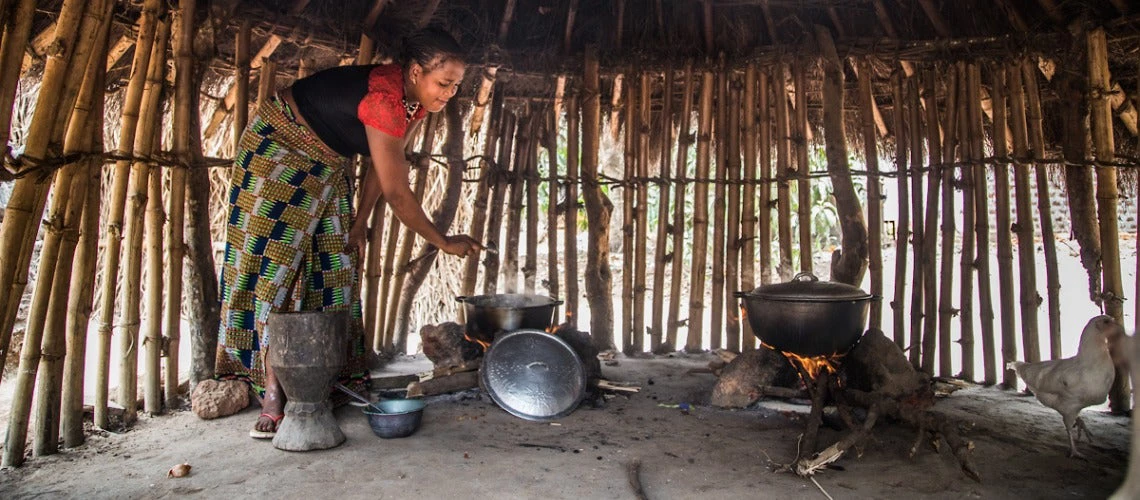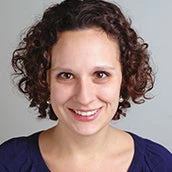 In Sub-Saharan Africa, the use of traditional cooking fuels is exposing the most vulnerable to household air pollution, with dire consequences for present and future levels of human capital. Copyright: Vincent Tremeau/World Bank
In Sub-Saharan Africa, the use of traditional cooking fuels is exposing the most vulnerable to household air pollution, with dire consequences for present and future levels of human capital. Copyright: Vincent Tremeau/World Bank
Recent analytical work from the Sahel region suggests that, after controlling for socioeconomic status, children living in households cooking primarily with solid fuels are almost three times more likely to be stunted (low height-for-age).
In Sub-Saharan Africa, the use of traditional cooking fuels and technologies is exposing the most vulnerable to household air pollution, with dire consequences for present and future levels of human capital in the region. The decisions that households make about which cooking fuels and technologies they use are informed by a range of social, cultural, and economic factors.
As a result, urgent action across the energy, social protection, and health sectors is required to ensure increased access to clean and improved cooking in Sub-Saharan Africa.
Traditional cooking fuels still common in Sub-Saharan Africa
Sub-Saharan Africa makes up 15 percent of the global population, but accounts for more than 34 percent of the world’s usage of traditional cooking fuels and technologies. Progress toward clean fuels and technologies has been slow, with a small increase in the use of clean fuels and a small decrease in the use of raw biomass fuels — wood, crop waste, and dung. The demand for fuel is rising, driven by a rapidly growing population and soaring urbanization, and tends to favor the use of charcoal — a practical but inefficient and polluting fuel.
The cost of inaction on clean cooking in Sub-Saharan Africa is estimated at $330 billion annually due to impacts on health and climate. Air pollution, largely household air pollution from solid fuel use with inadequate stoves and poor ventilation, is the third highest risk factor for mortality and morbidity in Sub-Saharan Africa.
Within poor households, where solid fuel use is most prevalent, women and children are disproportionately affected by exposure to household air pollution, as women and children are frequently nearer cooking stoves — resulting in close exposure to a high concentration of pollutants.
Impact of household air pollution on human capital and climate
Early childhood is a critical period for growth and development, and the increased risk of morbidity from exposure to household air pollution can disrupt the knowledge, skills, and wellbeing they require to build human capital. In adulthood, the health impacts of exposure to household air pollution can affect productivity, wages, and overall quality of life.
In addition to the direct human costs, the sourcing, production, and combustion of solid fuels has significant environmental impacts. Regions with limited access to clean cooking fuel and technologies are vulnerable to frequent and severe climate shocks. This is worsened and accelerated by the pressure put on natural resources due to fuel collection.
Working across sectors to implement clean cooking technologies
The need for urgent action on clean cooking is clear. The solutions will require tiered efforts across the energy, social protection, and health sectors. Long-term solutions should increase physical and financial access to clean cooking fuels and technologies and promote their use.
Short-term solutions should encourage the use of improved cooking technologies that emit lower concentrations of pollutants and reduce fuel-use per meal cooked. These should be integrated with behavioral change interventions that improve household ventilation practices, ensure children spend less time around stoves, and promote cooking practices that minimize exposure to air pollution (e.g., soaking beans to minimize cooking time).
These three sectors play a key role in addressing household air pollution:
- Energy: The energy sector should aim to strengthen electrification efforts to improve energy infrastructure and dissemination and provide greater access to energy-efficient cooking solutions. This will improve the reliability of electricity access throughout countries; and increase access to electricity and energy-efficient cooking solutions, even among the most remote populations. Fostering strategic partnerships between the energy and private sectors can encourage innovative clean or improved cooking technologies and ensure they are marketable for different consumer contexts.
- Social protection: Social protection efforts should prioritize social registries to identify vulnerable households in need of subsidized clean or improved cooking technologies, accompanied by measures to disseminate behavioral change messages through social safety net programs which serve the poorest. These measures can also be used to strengthen income generating activities and financial access to clean/improved cooking.
- Health: The health sector is best positioned to develop effective messaging that encourages behavior change and increases the use of clean cooking fuels and technologies.
Harnessing the unique capabilities across the energy, social protection, and health sectors will ensure integrated clean cooking fuel and technology solutions for healthier, more productive lives among the region’s most vulnerable households.
Within the World Bank, the Energy Sector Management Assistance Program (ESMAP) Clean Cooking Fund co-finances investment projects to scale up investments in the clean cooking sector, mobilizes high-level political commitments, and generates and disseminates pertinent knowledge. And in Chad, the World Bank is piloting the harmonization of two existing World Bank energy and social protection projects with the wider aim of strengthening their impact on human capital and climate change mitigation. If successful, this could be replicated in other contexts.
To receive weekly articles, sign-up here






Join the Conversation